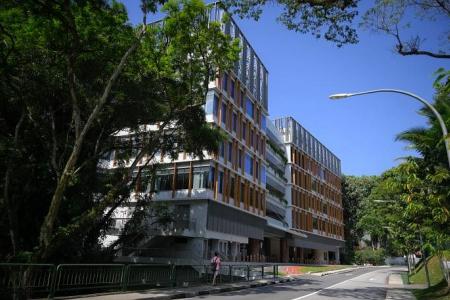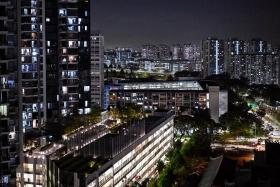S'pore takes nuclear safety research to the next level
In a signal that Singapore could be serious about harnessing nuclear power as a clean energy source, more resources are being pumped into nuclear technology and safety research, and training the best minds in the field.
A new multimillion-dollar research building at the National University of Singapore will house about 100 researchers looking at everything from the latest in small modular reactors (SMRs), which can be scaled up like Lego bricks, to how radioactive materials can disperse if there is an accident.
Said Professor Chung Keng Yeow, director of the Singapore Nuclear Research and Safety Initiative: “We must have enough local talent, manpower, and an in-depth understanding of nuclear safety before Singapore can make a concrete decision on whether to deploy nuclear energy to green our energy mix.”
To that end, his institute will continue to build capacity in areas ranging from the safety of nuclear reactors to radiobiology (health impacts of radiation on human beings) and radiochemistry, which involves rapidly detecting any elevated level of radioactivity above what is naturally occurring in the environment.
A major focus is on nuclear safety – including preventing and mitigating potential accidents, and protecting people and the environment from radiation hazards.
There are also plans to hold public talks to educate people on the centre’s work, and to dispel any fears and misconceptions on nuclear safety.
In 2023, the Nanyang Technological University announced a new research centre for nuclear fusion with France’s Alternative Energies and Atomic Energy Commission, known as the Singapore Alliance with France for Fusion Energy.
Fusion essentially works when two nuclei combine together to form a single heavy nucleus, producing massive amounts of energy in the process with no long-term radioactive waste, a problem with traditional nuclear fission technologies (where the uranium atom is split into two).
Singapore has collaborated with experts from a number of countries, such as France, and international organisations including the International Atomic Energy Agency (IAEA) for research on nuclear safety.
On March 1, Second Minister for Trade and Industry Tan See Leng said in Parliament that Singapore is collaborating with overseas institutes to build capabilities in fusion energy.
The tie-ups are the culmination of a decade’s work in building up nuclear expertise.
“We have done very well in putting nuclear research programmes in place, and setting everything in motion”, said former National Research Foundation (NRF) chief Low Teck Seng, who got the ball rolling when NRF funded a $63 million programme to boost the nation’s nuclear expertise in 2014.
“But we will need to continue building up our talent base, to attract more young people to pursue studies in nuclear-related areas.”
Clean energy sources will form a critical part of Singapore’s efforts to achieve net-zero emissions by 2050, when all its emissions are counterbalanced by removing carbon from the atmosphere.
In one scenario highlighted by the Energy Market Authority in its 2050 committee report, nuclear energy could supply about 10 per cent of Singapore’s energy needs by 2050.
This could potentially form a larger proportion of Singapore’s energy mix post-2050, once nuclear tech has been proven viable, said Prof Chung.
Nuclear energy is seen as an attractive power source as it is able to produce massive amounts of energy with just a small amount of fuel. And unlike renewable energy, it is not weather-dependent.
In addition, newer nuclear power-plant designs like SMRs are being developed, and they have the potential to be much safer than many of the traditional power plants in operation today.
Many of these SMRs will likely become commercialised by the 2030s.
While severe nuclear accidents are few and far between, nuclear power has earned itself a bad reputation after disasters such as those in Fukushima and Chernobyl.
Studies, however, have shown that death rates from the production of nuclear energy are comparable to those from modern renewables such as solar, wind and hydropower, and remain much lower than for fossil fuels.
Prof Chung added that the accidents in Fukushima and Chernobyl were largely due to the design of the nuclear plants, and safety standards have since improved by leaps and bounds.
For example, in the case of Fukushima, an earthquake and a tsunami in 2011 knocked out the plant’s emergency generators which are needed for cooling the reactor, which resulted in a nuclear meltdown.
But newer plants are designed in a way such that the plant can be cooled without the use of electricity, he said.
The institute also keeps a close watch on new and upcoming nuclear technologies, and zooms in on the ones closest to being commercialised, which could be viable options for Singapore.
Currently, China, France and the United States have the most nuclear reactors in the world. And according to the IAEA, there are more than 80 SMR designs and concepts globally.
There are only two completed SMRs so far, in China and Russia, while another two are in advanced stages of construction in Argentina and China.
Having a dedicated research building will serve as a signal to prospective students that there are viable careers in nuclear research, said Professor Low, who is now NUS’ senior vice-president for sustainability and resilience.
Get The New Paper on your phone with the free TNP app. Download from the Apple App Store or Google Play Store now


